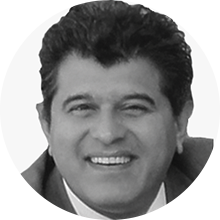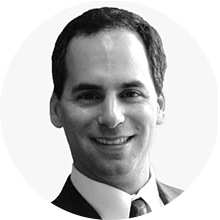

The initial wave of the COVID-19 pandemic resulted in the suspension of clinical and surgical ophthalmic activities. Remobilization of these services provided an unexpected opportunity to review and revise all aspects of the patient pathway.
BACKGROUND
Most of our routine ophthalmologic surgical processes are adapted from the traditional principles for inpatient surgical procedures. An awareness of this background provides the impetus for the progressive ophthalmologist to question why we do what we do. Often, the answer to that question reveals a lack of clear benefits. Following a similar surgical process to one that is indicated for inpatient surgery can cause detours to the delivery of efficient patient care in ophthalmology.
Rather than simply cut corners to reduce patient interaction time, COVID-19 has been a disruptive driver to help us create a purpose-driven, lean process that is both centered on patients and specific to ophthalmic requirements.
BUILDING BACK BETTER
The pandemic has seismically changed patient expectations and access to health care. Some markets have reported greater refractive surgery procedure numbers in the period since the initial COVID-19 restrictions were announced.1 Mask wearing has highlighted the restrictive nature of spectacles, and patients appear to be more motivated than ever to have vision correction surgery. Most of them have done their homework and already selected their surgeon.
The restarting of clinical services after the lockdown provided an opportunity for us to pivot from traditional marketing, which too often focused on financial incentives rather than demonstrating the clinical benefits to patients’ daily lifestyles. Additionally, highlighting the efforts being made to strengthen hygiene and sanitation protocols underpins the message that patients are our top priority. Virtual tours on practice websites offer further reassurance that the facility is a safe place to visit.
With better initiatives such as scheduling appointments online and telemedicine consultations, prospective patients are now in control of the streamlined appointment process, and staff members can concentrate on patients who are more committed to intervention. After patients request an appointment, they receive a text message with three suggested times for a telemedicine consultation (we use the platform doxy.me) with an ophthalmic technician. If those times are not convenient, three new times are offered. Patients also have the option to submit their medical history, prescription, and reasons for wanting refractive surgery via a link sent from Formstack to their phone, tablet, or computer. These automated processes have improved efficiency and enabled patients to be more involved in their care decisions.
In our experience, virtual consultations tend to be focused on patients’ desires and expectations, including opinions on spectacle independence. Various refractive options are introduced depending on patient needs. Dry eye is addressed proactively, and all patients are sent an electronic pamphlet on dry eye and encouraged to take steps to maximize the health of their ocular surface for potential surgery. This has greatly improved compliance and increased the volume of patients who are ready to proceed to surgery if they are suitable candidates. Before completing the virtual consultation, patients are prompted to schedule an in-person appointment to complete the preoperative clinical examination.
AVOIDING INEFFICIENCIES
Clinical facilities have always been clean and safe, but patients appreciate knowing that all clinical staff wear scrubs, there are multiple hand sanitizer stations throughout the clinic, and gloves and masks are prominent and readily available. Plexiglass shields installed at every device protect patients and examiners.
Whenever possible, the technician who performed the virtual consultation also conducts the in-person assessment to provide reassurance and familiarity. The optometrist performs the initial examination and refraction and demonstrates blended vision in a trial frame. The ophthalmologist only sees the patient once the pupil is dilated to perform the cycloplegic refraction and anterior and posterior segment examinations. The consent form is completed manually and then digitized. This enhanced efficiency improves the patient experience.
All decisions are made in partnership with patients. They are guided through real-life, objective data captured with Vivior (Vivior), a wearable monitor that is placed on the spectacle frames to capture data in the patient’s work and home environments, including working distances, head position, and ambient light usage. Vivior then generates a personal defocus curve for patients’ specific needs and uses the software’s Lifestyle Match Index to select the most appropriate IOL.
ADDRESSING ATTITUDES IN THE OR
To ensure efficiency in the perioperative setting, every patient interaction should have a clear purpose. This includes reducing and refining patient paperwork and consent forms. Staff interaction with patients can be reduced by replacing preoperative dilating topical drops with mydriatic inserts like Mydriasert (0.28 mg tropicamide/5.4 mg phenylephrine hydrochloride, Théa) or avoided through the use of intracameral dilating agents such as Mydrane (Théa), which has been shown to reduce ocular surface damage compared to topical eye drops and promote more efficient procedure times.2-4 The World Health Organization’s surgical checklist is essential to ensure safe surgery, but it should be refined and optimized for ophthalmic procedures.
To deliver surgical excellence repeatedly, it is imperative to ensure that risks are identified in the clinic and that all necessary surgical adjuncts are available in the OR and used appropriately. Planned or early adjunctive use of certain technologies in complex cases can enable even the trickiest surgeries to be completed safely and can avoid further complications and substantial costs to the patient and the surgeon in terms of risk and recovery.5,6
REFINING POSTOPERATIVE MANAGEMENT
The process of providing follow-up care to patients is influenced by the structures of our health care systems, reimbursement, and any previous negative personal experiences. In our experience, compliance with postoperative medication regimens has improved when the number of medications is minimized. We can accomplish this with the use of intracameral antibiotics, periocular topical steroid injections, and sustained-release formulations of dexamethasone as an intracanalicular insert or an intraocular suspension.
Early follow-up with complex or complicated cataract surgery patients in the immediate postoperative period is imperative. In the setting of routine cataract surgery, however, there is no evidence that follow-up at day 1 or week 1 adds anything to the clinical course. Due to cost considerations and limited clinical capacity, many public health care systems have pivoted to optometric review for 1-month follow-up. For this to happen, good communication channels with clear return referral processes for unexpected findings are paramount. Whether it is because of COVID-19 restrictions, limited capacity issues, or to preserve busy clinicians’ time to see patients with greater clinical need, reducing unnecessary clinical appointments is in everyone’s best interest.
CONCLUSION
It has become obvious to us that major and minor changes can be made to historic ophthalmic practice as we resurface in the post–COVID-19 world. We have mentioned only a fraction of these refinements. Various surgeons from around the world share their related thoughts in the sidebar Detours From the Traditional Clinical Pathway.
Detours From the Traditional Clinical Pathway
Surgeons share which of the changes they made in response to the COVID-19 pandemic have become a permanent fixture in patient care.
By Zeynep Aktas, MD; Francesco Carones, MD; Arthur Cheng, MBBS (Syd), MRCSEd, FCOphth HK, FRCOphth, FHKAM; Sorcha Ni Dhubhghaill, MD, PhD, FEBOS-CR; Sheraz M. Daya, MD, FACP, FACS, FRCS(Ed), FRCOphth; Nicole R. Fram, MD; Cathleen M. McCabe, MD; Erik L. Mertens, MD, FEBOphth; and William B. Trattler, MD

Zeynep Aktas, MD
Ankara, Turkey
- Associate Professor of Medicine, Medicana International Hospital
Like all medical practices, ours created a new ophthalmic care model that has led to a new normal for us. Even after the current pandemic is over, we will continue to follow social-distancing guidelines and avoid crowding in the clinic. We also think it will be beneficial for both patients and practitioners to continue wearing face masks for certain parts of the clinical evaluation, such as face-to-face slit-lamp and pneumotonometry examinations. We also see the protective shields we had installed on these devices as permanent fixtures to keep all of us safe from COVID-19, the flu, and other contagious viruses.
As a glaucoma specialist, I think we need to pay special attention to the cleaning of tonometers and perimetry bowls after each patient because these are other potential sources for viral spread. Lastly, telemedicine seems to be an important part of our practice that we will continue to use after the pandemic.

Francesco Carones, MD
Milan, Italy
- Medical Director and Physician CEO, Carones Vision @ ADVALIA
With some creative thinking, we identified opportunities outside of traditional digital marketing strategies that we believe provide patients with a similar experience to the tactics we use on-site but cannot offer right now. The aim of these initiatives is to replicate the patient experience by building a relationship between our practice and our potential customers virtually. In general, we developed and employed new tactics with the following in mind: A voice conveys more empathy than a written message, a face is more endearing than an image, and a story is more engaging than a single scene. (Click here to read a related article from CRST’s archives on how Dr. Carones uses online initiatives to reach potential patients.)
Arthur Cheng, MBBS (Syd), MRCSEd, FCOphth HK, FRCOPHTH, FHKAM
Hong Kong
- Honorary Consultant in Ophthalmology, Hong Kong Sanatorium & Hospital
- Honorary Clinical Associate Professor, Department of Ophthalmology, Hong Kong University
- Clinical Associate Professor, Department of Ophthalmology and Visual Sciences, The Chinese University of Hong Kong
We found through trial and error that taping the upper border of patients’ face masks prevents their breath from fogging up the patient interface cone during laser cataract and refractive surgery procedures. This problem does not have any impact on the results of the procedures, but it was a concern to see the air droplets on the cone. The simple solution of applying tape to the upper part of the mask was an easy and effective fix. After surgery, we give patients a free mask, and we plan to get some made with our logo on them.
We continue to test our staff weekly for SARS-CoV-2 with rapid testing and, if positive, require a follow-up polymerase chain reaction test to confirm results. A polymerase chain reaction test is also required of all staff members who come into contact with infected individuals.

Sorcha Ni Dhubhghaill, MD, PhD, FEBOS-CR<
Rotterdam, Netherlands
- Consultant corneal and cataract surgeon, UZA-Antwerp University Hospital and NIIOS Rotterdam
Even after this pandemic is behind us, we will continue to perform 1-week follow-up of cataract surgery patients with telemedicine. This modification has been convenient for our patients, particularly the mobility impaired, and it has made our clinics even more efficient.

Sheraz M. Daya, MD, FACP, FACS, FRCS(Ed), FRCOphth
East Grinstead, United Kingdom
- Medical Director, Centre for Sight
To reduce patients’ time in clinic, we ask that they read all information and consent forms and watch all videos in advance of the consultation. That measure alone has improved patient flow, understanding, and acceptance. Additionally, the use of immediate sequential bilateral cataract surgery (ISBCS) at our practice has increased from 10% before the pandemic to 65% now. That modification to our surgical preferences will stay.

Nicole R. Fram, MD
Los Angeles
- Private practice, Advanced Vision Care, Los Angeles
- Clinical Instructor of Ophthalmology, Jules Stein Eye Institute, University of California
The single most important and positive change in our office since COVID-19 is something that we call the prefill phone call. It involves a technician calling patients 2 days before their visit and asking all of the questions that typically are posed during their initial visit. When the patient arrives in our office, the chief complaint, history of present illness, past medical and ocular history, list of current medications, and allergies are already populated in our electronic medical record system. This tactic has cut our workup time from 15 to 20 minutes to less than 5 minutes, thereby improving our efficiency and enhancing our provision of comprehensive care.

Cathleen M. McCabe, MD
Bradenton and Sarasota, Florida
- Cataract and Refractive Surgery Specialist and Medical Director, The Eye Associates
The pandemic has highlighted the need to limit patient wait times in the building and to replace some in-person steps with virtual consultations, especially for cataract surgery. We will continue to have an elevated sensitivity to overcrowding and bottlenecks in patient flow through the clinic and OR. Handshakes are also a thing of the past, decreasing the risk of spreading viral infection.

Erik L. Mertens, MD, FEBOphth
Antwerp, Belgium
- Physician CEO, Medipolis
What influenced my practice most was not shaking hands with patients anymore. Combined with mask wearing and a stricter hand hygiene regimen, this change has led to a 33% reduction in the number of days our staff calls in sick. These stringent hygiene measures will remain in the future.
We also installed TV screens in the entrance and waiting areas to display general information (not only about eyes and eye surgery), which patients love. About 1 year ago, we moved away from traditional cataract surgery in favor of ISBCS, and patients have responded positively. We now attract a lot of patients who would have otherwise gone to a general hospital for cataract surgery. ISBCS is here to stay at Medipolis. It saves time and money, and the reduced number of visits to our clinic is much appreciated by patients.

William B. Trattler, MD
Miami
- Director of Cornea, Center for Excellence in Eye Care
Mask wear by our staff, physicians, and patients has led to a sharp decline in the spread of viral illnesses in our practice. I anticipate requiring that masks be worn for the long term, especially during the months when the risk of flu transmission is high. We may also continue with our reduced patient load and have fewer doctors working each day because it has increased patient satisfaction.
Rethinking patient care and routine workflow have clear benefits to patients and, consequently, to their experiences. It is not enough, however, for the clinicians to refine their processes. Much of the current bureaucracy requires significant updating. Medical defense indemnity and medicolegal guidelines relating to performing surgical procedures in an outpatient setting must be modernized and refined to protect both clinicians and patients going forward. When this is accomplished, advances such as immediate sequential bilateral cataract surgery and office-based surgery can occur safely without carrying the risk of cutting clinical corners.
By investing in change, we can make the patient pathway much more efficient and ultimately bring health care costs down in the longer term. It should not have required COVID-19 disruptions to initiate change, but we should all take this opportunity to refine and improve the standard of care we can offer to our patients.
1. Refractive Surgery Council reports nearly 30% rise in laser vision correction procedures year over year. Refractive Surgery Council. April 30, 2021. Accessed May 10, 2021. https://eyewire.news/articles/refractive-surgery-council-reports-nearly-30-rise-in-laser-vision-correction-procedures-year-over-year/
2. Behndig A, Korobelnik JF. Mydriatic insert and intracameral injections compared with mydriatic eyedrops in cataract surgery: controlled studies. J Cataract Refract Surg. 2015;41(7):1503-1519.
3. Assil KK, Greenwood MD, Gibson A, Vantipalli S, Metzinger JL, Goldstein MH. Dropless cataract surgery: modernizing perioperative medical therapy to improve outcomes and patient satisfaction. Curr Opin Ophthalmol. 2021;32(suppl 1):S1-S12.
4. Souki S, Cochener B, Labetoulle M, Güell JL. A phase IV clinical study to evaluate the effects of an intracameral combined mydriatic and anesthetic agent and standard topical mydriatics and anesthetics on the ocular surface after cataract surgery. J Cataract Refract Surg. 2021;47(5):570-578.
5. Jamison A, Benjamin L, Lockington D. Quantifying the real-world cost saving from using surgical adjuncts to prevent complications during cataract surgery. Eye (Lond). 2018;32(9):1530-1536.
6. Wielders LHP, Schouten JSAG, Winkens B, et al; ESCRS PREMED Study Group. European multicenter trial of the prevention of cystoid macular edema after cataract surgery in nondiabetics: ESCRS PREMED study report 1. J Cataract Refract Surg. 2018;44(4):429-439.




